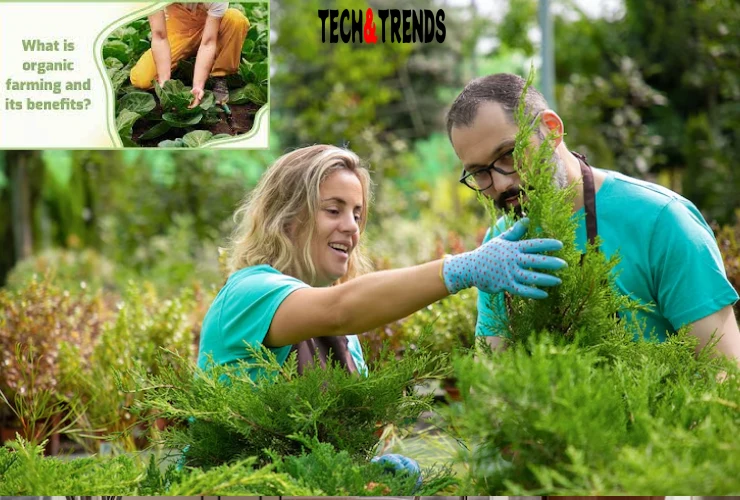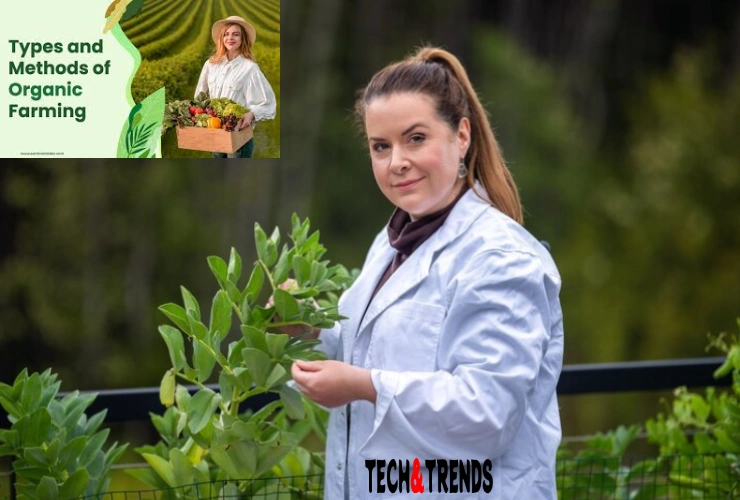When it comes to growing and handling food, using the best organic practices is key for making sure our meals are safe, healthy, and full of flavor. More and more people today want food that is free from harmful chemicals and made in a way that protects the environment.
The best Farming practices help farmers, gardeners, and food producers grow crops and raise animals that are good for the earth and for people’s health. These methods focus on natural ways to keep soil rich, control pests, and improve food quality. By following the best Farming practices, we can enjoy food that is safe to eat, tastes great, and supports a healthier planet.
What Are Organic Practices?
Organic practices are farming and food production methods that avoid synthetic chemicals, genetically modified organisms (GMOs), and artificial additives. Instead, they use natural processes and materials to grow crops and raise animals. Organic farmers focus on keeping the soil healthy, using compost and manure, rotating crops, and protecting the environment. These practices help plants and animals grow strong, reduce pollution, and keep food safe for people and the planet.
Why Food Safety and Quality Matter in Organic Farming
Food safety means making sure food is free from harmful germs, chemicals, or other dangers that can make people sick. Quality means the food tastes good, is fresh, and has good nutrients. In organic farming, safety and quality are very important because people choose organic food to be healthier. When farmers use the best organic Agriculture, they reduce the risk of contamination and make sure the food is safe and high-quality from farm to table.
Best Organic Practices for Healthy Soil
Healthy soil is the foundation of all good organic farming. Farmers use compost, manure, and cover crops to add nutrients back into the soil. This helps plants grow strong and healthy. Crop rotation is another important practice, which means growing different crops in the same field each year. This stops pests and diseases from building up and keeps the soil rich. Mulching, or covering the soil with leaves or straw, helps keep moisture in and weeds out. Healthy soil leads to healthy plants, and healthy plants mean safe, quality food for everyone.
Natural Pest and Disease Control Methods
Instead of using chemical pesticides, organic farmers use natural ways to control pests and diseases. They plant a variety of crops to confuse pests, use beneficial insects like ladybugs to eat harmful bugs, and set up barriers or traps. Farmers also keep their fields clean and remove sick plants quickly. Some plants, like marigolds, can naturally repel pests. These methods keep crops safe without using harmful chemicals, protecting both the environment and the people who eat the food.
Choosing the Right Seeds and Plants
Organic farmers choose seeds and plants that are suited to their local climate and soil. They prefer organic, non-GMO seeds to make sure their crops are natural and strong. Some farmers save seeds from their best plants to use the next year. This helps create plants that are resistant to local pests and diseases. Choosing the right seeds and plants is a key part of the best organic practices for safe, high-quality food.
Water Management in Organic Farming
Water is a precious resource, and organic farmers use it wisely. They collect rainwater, use drip irrigation to give plants just the right amount of water, and avoid wasting water. Good water management helps prevent diseases that can spread in wet conditions. It also keeps the soil healthy and reduces the need for extra chemicals. Careful water use is an important part of organic farming for both safety and quality.
Organic Practices for Animal Health and Welfare
Animals raised organically are treated with care and respect. They have access to clean water, fresh air, and plenty of space to move around. Farmers feed them organic food and avoid using antibiotics or growth hormones. This keeps the animals healthy and reduces the risk of disease. Healthy animals mean safe, high-quality meat, milk, and eggs for consumers.
Harvesting and Handling Organic Food Safely
When it’s time to harvest, organic farmers make sure to handle food carefully to keep it clean and safe. They use clean tools and containers, and wash their hands before touching food. Harvesting at the right time ensures the best flavor and nutrition. After harvest, food is stored in clean, dry places to prevent spoilage and contamination. Safe handling is a big part of the organic Food Production for food safety and quality.
Storing and Selling Organic Products
Proper storage keeps organic food fresh and safe until it reaches the consumer. Farmers use cool, dry places and sometimes special packaging to protect food. When selling, they make sure to label products clearly as organic and keep them separate from non-organic items. This helps consumers know they are getting real organic food. Good storage and selling practices are important for maintaining food safety and quality.
Testing and Certification for Organic Food Safety
To prove their food is truly organic, farmers can get certified by official organizations. These groups check that farmers follow all the organic Food Production. They test soil, water, and food samples to make sure there are no harmful chemicals. Certification gives consumers confidence that the food is safe and high-quality. Testing and certification are important steps in organic farming for food safety.
Benefits of Following Gardening
Following the Gardening has many benefits. It keeps food safe from harmful chemicals, protects the environment, and supports healthy soil and water. Organic food often tastes better and has more nutrients. Farmers who use organic methods help fight climate change and protect wildlife. Consumers enjoy food that is good for their health and the planet.
Challenges and Solutions in Organic Farming
Organic farming can be challenging. Pests and diseases can be harder to control without chemicals. Organic food sometimes costs more to produce. But farmers find solutions by working together, sharing knowledge, and using new technologies. Governments and organizations also help by providing training and support. With teamwork and innovation, organic farmers can overcome challenges and keep food safe and high-quality.
Tips for Consumers: How to Choose Safe, Quality Organic Food
Consumers can make smart choices by looking for official organic labels on food. Buying from local farmers markets or trusted stores helps ensure the food is fresh and authentic. Reading labels and asking questions about how food is grown can help people make informed decisions. Choosing organic supports farmers who use the t organic practices for food safety and quality.
The Future of Organic Practices and Food Safety
The future of organic farming looks bright. More people want safe, healthy food, and farmers are finding new ways to grow organically. Technology helps farmers monitor soil and crops, and new methods make organic farming easier and more productive. As more people choose organic, the organic Food Safetys will continue to improve food safety and quality for everyone.
Conclusion:
The best organic practices are essential for growing food that is safe, healthy, and good for the environment. By focusing on natural methods, organic farmers protect soil, water, and wildlife while producing high-quality food. Consumers who choose organic support these efforts and enjoy food that is better for their health.
Following the organic Food Safety is a win for everyone—farmers, consumers, and the planet. As more people learn about the benefits of organic food, the demand for safe, quality products will keep growing. Together, we can build a healthier future by supporting the best organic Harvesting Techniques in food production.


Comments are closed.